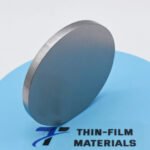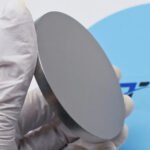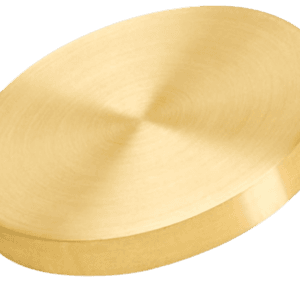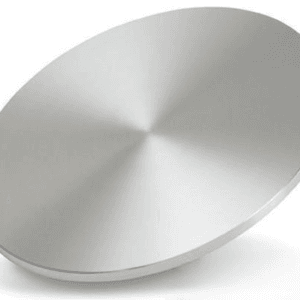Tungsten Nickel Boride (WNiB) Sputtering Target Description
Discover the exceptional performance of Tungsten Nickel Boride (WNiB) Sputtering Targets and their transformative applications across high-tech industries. This page showcases the remarkable synergy of Tungsten, Nickel, and Boron in advanced thin film deposition, opening new frontiers in materials science and engineering.
Tungsten: The Pinnacle of Strength
Tungsten (W), with its distinctive steel-gray appearance, stands as the metal with the highest melting point (3,422°C) in the periodic table. Renowned for its extraordinary density, hardness, and thermal stability, tungsten maintains exceptional strength even at elevated temperatures. These properties make WNiB sputtering targets indispensable for applications requiring extreme durability, including cutting tools, aerospace components, and high-temperature electronics.
Nickel Boride: The Catalyst for Excellence
The nickel boride (NiB) component introduces unique catalytic properties and enhanced wear resistance to the alloy. This combination creates a material with superior electrical conductivity and remarkable corrosion resistance, even in harsh chemical environments. The WNiB composite excels in applications demanding both mechanical robustness and functional performance.
Related Products: Tungsten Sputtering Target, Nickel Boride Sputtering Target
Tungsten Nickel Boride Sputtering Target Specifications
| Specification | Details |
|---|---|
| Material Type | Tungsten Nickel Boride |
| Chemical Symbol | W/Ni/B |
| Color/Appearance | Metallic gray, solid |
| Available Sizes | Dia.: 1.0″, 2.0″, 3.0″, 4.0″; Thick: 0.125″, 0.250″ (Custom available) |
| Standard Purity | 99.7% (Higher purities up to 99.999% on request) |
| Packaging | Individually tagged, vacuum-sealed with protective casing |
WNiB Sputtering Target Applications
Revolutionary Thin Film Solutions:
WNiB targets enable deposition of ultra-durable coatings for cutting tools, turbine blades, and wear-resistant surfaces in industrial machinery.
Advanced Electronic Components:
Essential for creating diffusion barriers in semiconductor devices and high-performance contacts in microelectronics.
Innovative Energy Systems:
Critical in developing next-generation fuel cell components and high-efficiency energy storage systems.
Pioneering Research Applications:
Facilitating breakthroughs in nanotechnology, quantum computing, and advanced material science research.
WNiB Sputtering Target Advantages
Unmatched Performance:
The unique combination of tungsten’s strength with nickel boride’s functional properties creates thin films with exceptional durability and conductivity.
Versatile Engineering Solutions:
From industrial wear coatings to cutting-edge semiconductor applications, WNiB targets deliver superior performance across multiple sectors.
Future-Ready Technology:
This advanced material system enables innovations in sustainable energy, advanced manufacturing, and next-generation electronics.
Harness the Power of WNiB Sputtering Targets
Elevate your thin film technology with our premium Tungsten Nickel Boride targets. Our experts are ready to collaborate on customized solutions tailored to your specific requirements. Contact us today to discuss how WNiB can transform your next project.







Reviews
There are no reviews yet.